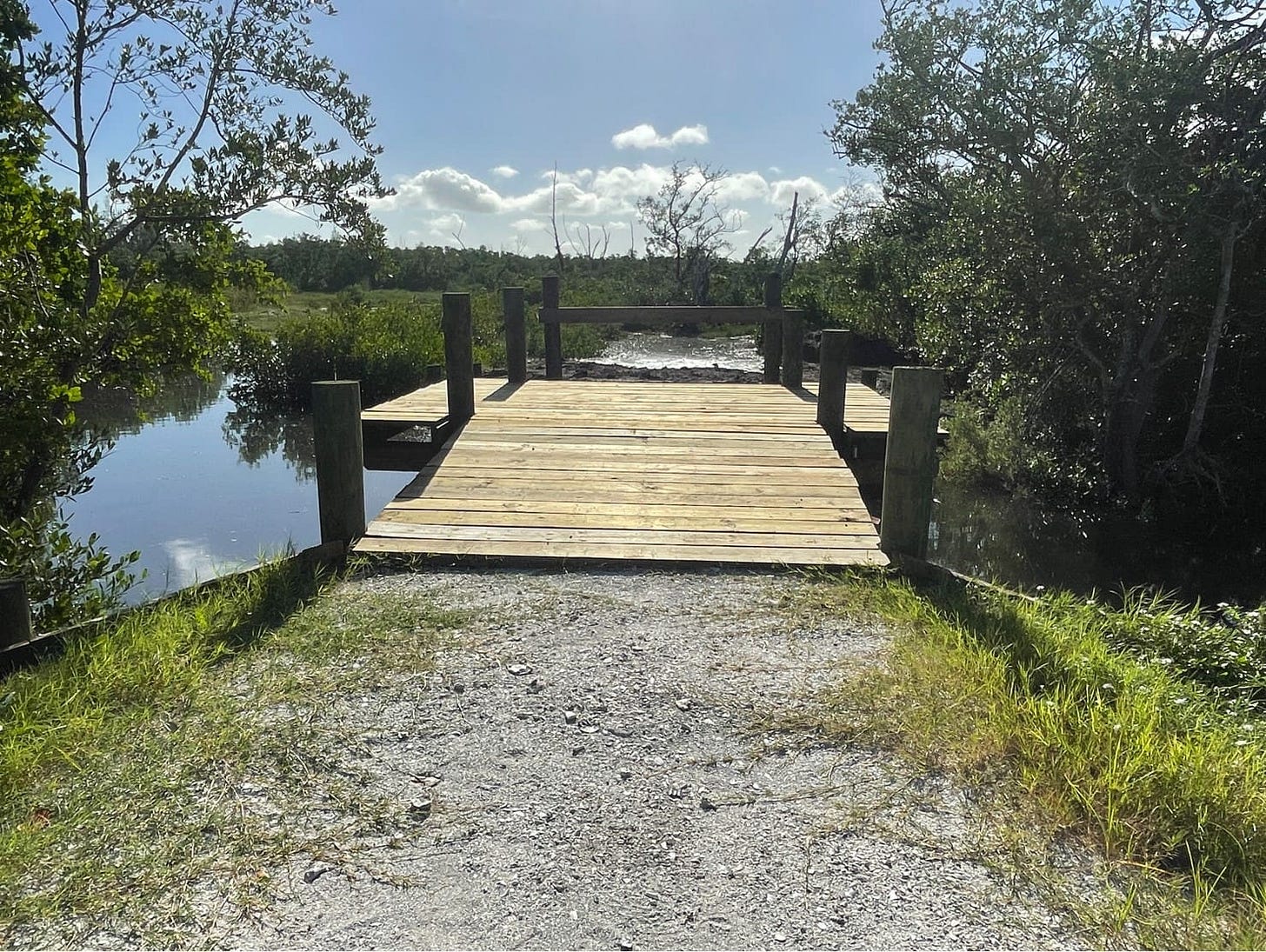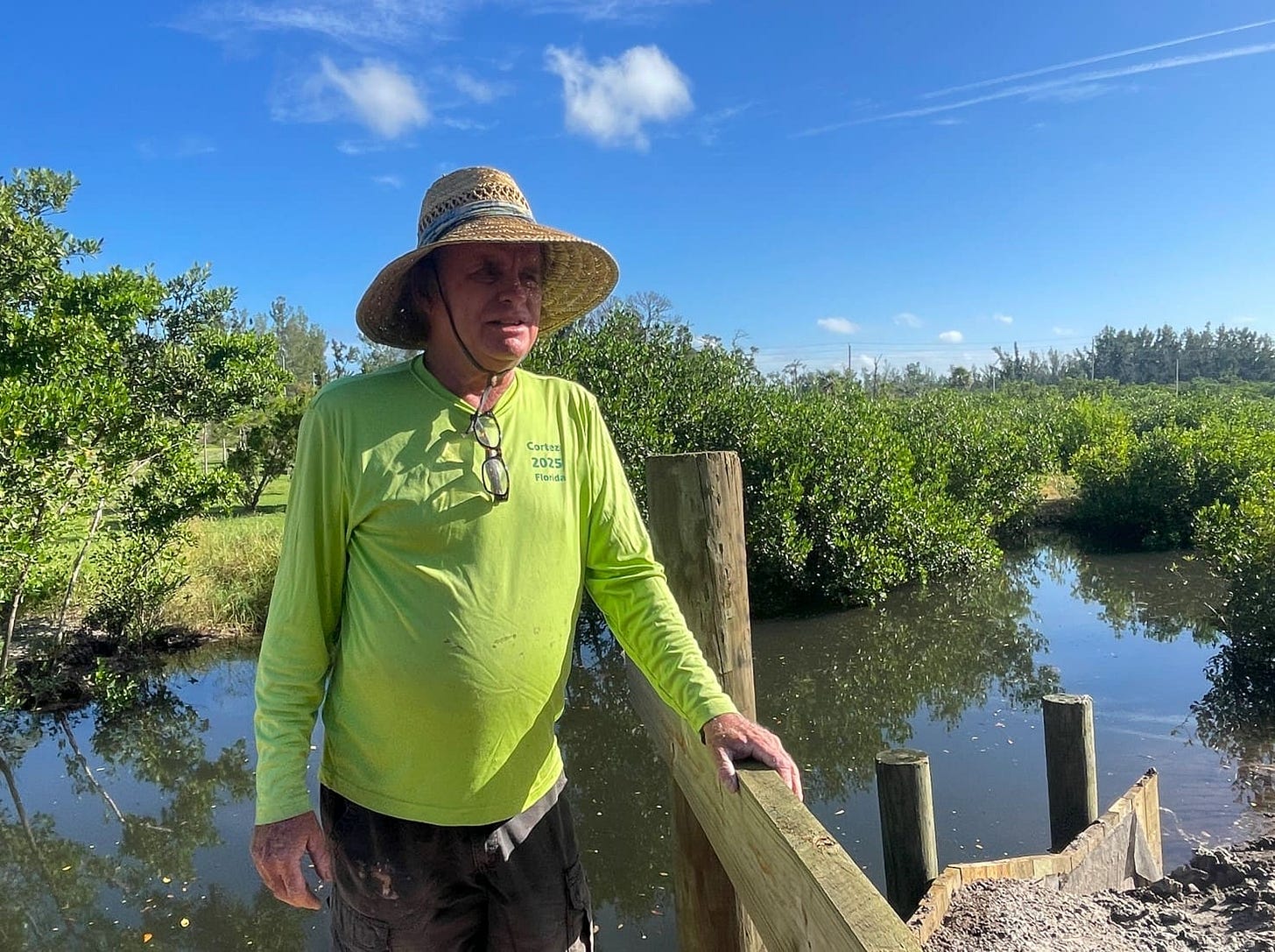Trails and Bridges Nearing Completion at FISH Preserve to Link East, West Sides
Work to complete pedestrian trails and bridges spanning the east and west portions of the FISH (Florida Institute for Saltwater Heritage) Preserve is advancing rapidly. On Oct. 4, landscape architect Allen Garner offered a public preview of the new features across the 98-acre preserve, emphasizing connectivity, habitat integration, and visitor experience.
The FISH Preserve, located adjacent to the historic fishing village of Cortez along Sarasota Bay, has long been the focus of conservation and restoration efforts. The nonprofit FISH organization was chartered in 1991 to preserve coastal and maritime heritage, spearheaded by local historians and fishing community members. Early in its history, FISH raised funds to salvage the 1890 waterfront store from demolition; later, it helped acquire and restore additional parcels of waterfront land.
In 2000, FISH purchased one of the core parcels, which was then degraded and invaded by nonnative species, with community support. Over the subsequent decades, coordinated restoration efforts reestablished upland and wetland communities, created tidal flow systems, and gradually transformed the site into a publicly accessible preserve. The 98-acre footprint now under restoration represents one of the last undeveloped waterfront stretches along North Sarasota Bay.
Garner, a retired landscape architect and longtime FISH affiliate, has played a pivotal role in planning and implementing the preserve’s public access infrastructure. In 2024, the FISH board approved a proposal crafted by Garner that guided the design and execution of the trails, bridges, and interpretive layout. By mid-2025, construction on the pedestrian bridges and connecting paths had reached approximately 75 percent completion.
Garner’s contributions in Manatee County extend beyond FISH. He has provided design services for community walking tours, historic preservation efforts, native landscape plantings in local heritage settings, and the design of GT Bray Park. Over the years, he has received recognition within regional landscaping and native-plant communities for thoughtful integration of aesthetic and ecological elements.
Once fully open, the new network of boardwalks, footbridges, and trails will allow visitors to traverse the preserve’s bayside strand, mangrove edge, upland ridges, and wetland zones in a continuous loop. Garner noted that the design emphasizes minimal disturbance to sensitive habitat while providing varied vantage points for observation and education.
The project’s completion is expected to enhance public access to a restored coastal ecosystem, support community engagement with the region’s marine heritage, and fulfill long-held goals of the FISH organization.
Photo Credit: Leslie Lake



